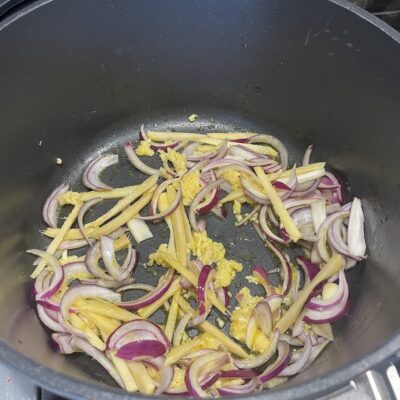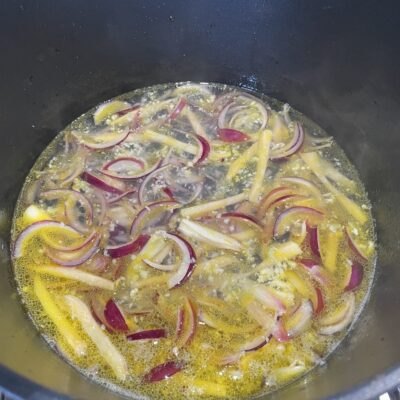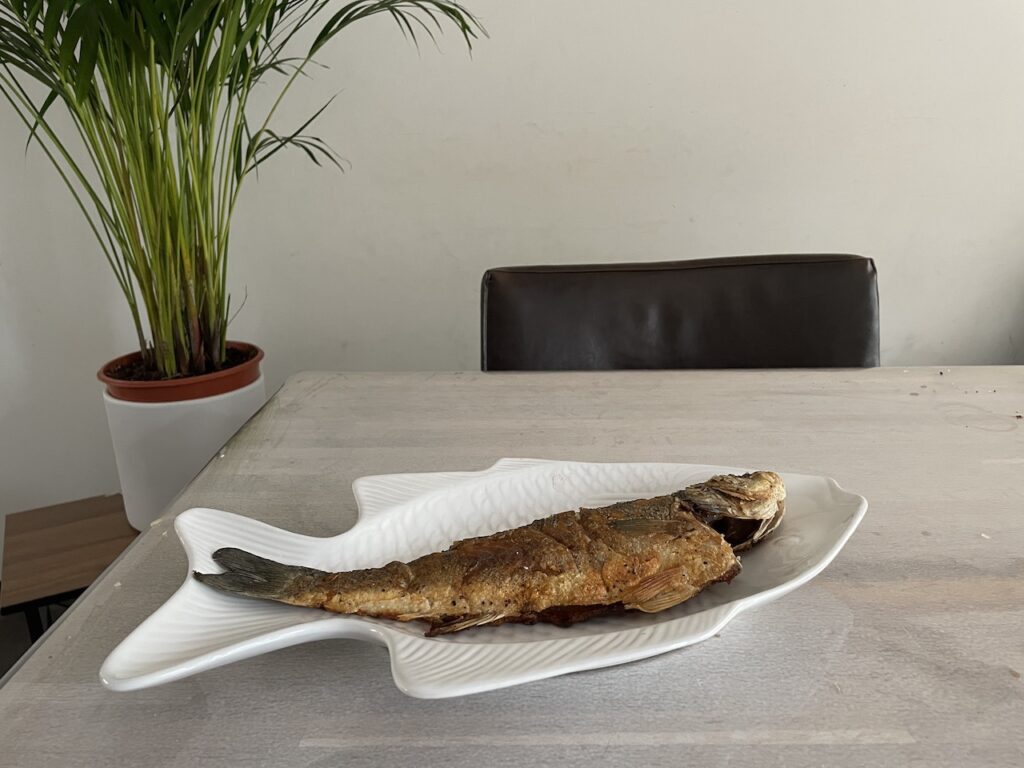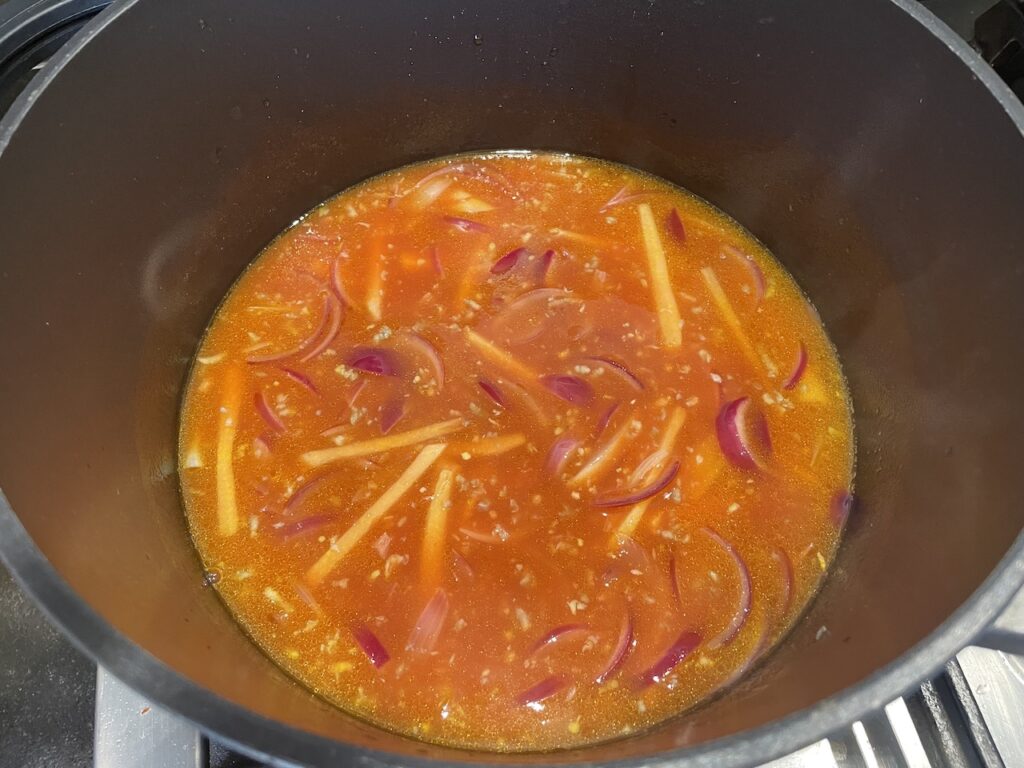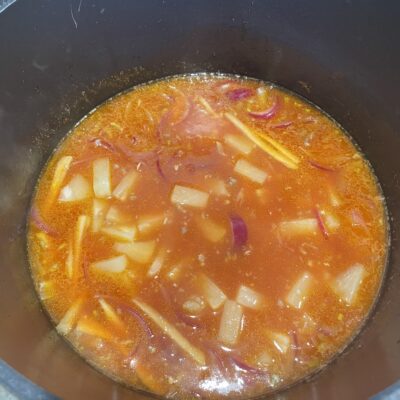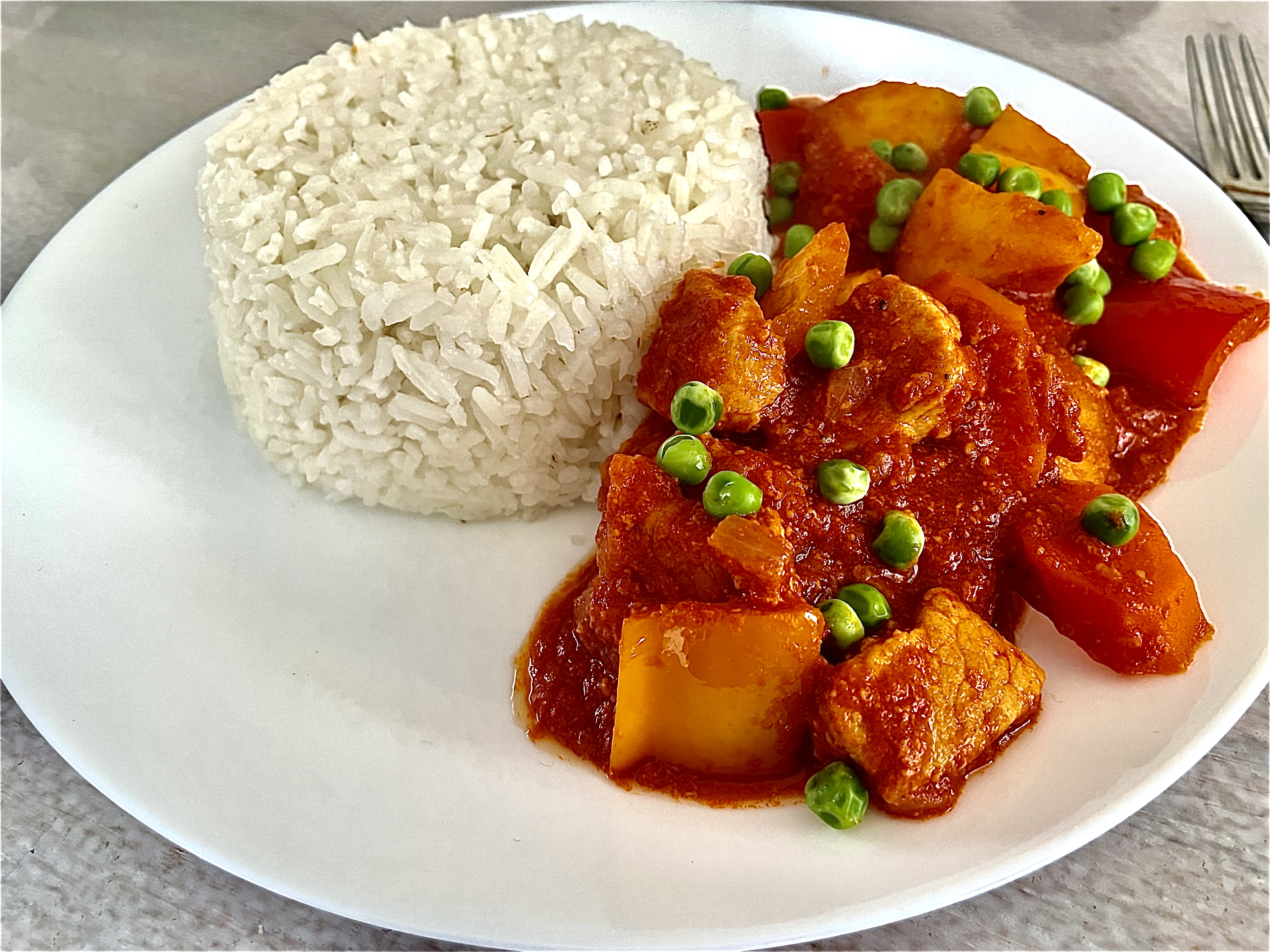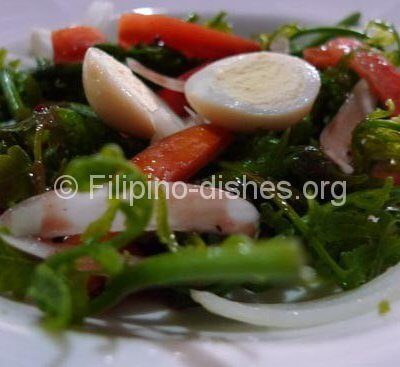
Sweet and Sour Fish Recipe
Sweet and sour fish, known as "Escabeche," is a flavorful dish with Spanish origins that has become a beloved part of Filipino cuisine. It features crispy fried fish topped with a tangy and slightly sweet sauce made with vinegar, sugar, and ketchup. Colorful vegetables like bell peppers, carrots, and onions add freshness and texture to the dish. Escabeche showcases the fusion of Spanish and Filipino culinary influences, offering a delightful balance of flavors that is enjoyed with steamed rice.
Ingredients
-
2 Pieces FishAny kind of fish (fried)
-
0.25 cup GingerJulienne
-
1 cup Pineapple Chunks in SyrupHalf cup Syrup
-
1 Large piece CarrotJulienne
-
1 piece Green Bell PepperJulienne
-
1 piece Red Bell PepperJulienne
-
7 tbsp Ketchup
-
3 tbsp Cooking Oil
-
1 piece Red OnionDiced
-
500 ml Water
-
6 cloves GarlicMinced
-
5 tbsp Vinegar
-
Optional:
-
to taste Sugar
-
to taste Black Pepper
-
to taste Salt
Directions
Sweet and sour fish, or “Escabeche” as it is known in the Philippines, is a popular and beloved dish in Filipino cuisine. It showcases the unique flavors and culinary influences that have shaped Filipino cooking.
In the Philippines, tilapia is commonly used as the fish of choice for sweet and sour preparations due to its availability and affordability. The dish typically features whole fish, often fried until crispy, and then topped with a tangy and slightly sweet sauce.
The sweet and sour sauce in the Filipino version of the dish is made by combining ingredients such as vinegar, soy sauce, sugar, ketchup, and sometimes pineapple juice or chunks. This combination creates a delightful balance of acidity, sweetness, and savory flavors. The sauce is cooked until it thickens slightly, allowing it to coat the fried fish and infuse it with its vibrant taste.
Along with the fish, the dish is often garnished with colorful vegetables like bell peppers, carrots, onions, and green peas. These vegetables not only add a pop of color but also provide a fresh and crunchy texture that complements the fish and sauce.
Sweet and sour fish is commonly served as a main course during family gatherings, celebrations, and special occasions in the Philippines. It is enjoyed with steamed rice, which helps to balance the flavors and soak up the delicious sauce.
Overall, the Filipino sweet and sour fish recipe embodies the country’s love for bold and contrasting flavors, combining the tanginess of vinegar and the sweetness of sugar to create a truly delightful culinary experience.
The history of sweet and sour fish, or “Escabeche,” can be traced back to its Spanish roots. The term “escabeche” comes from the Spanish word “escabechar,” which refers to a cooking technique used to preserve and flavor food.
Escabeche was introduced to the Philippines during the Spanish colonial period, which lasted for more than three centuries. The Spanish influence heavily impacted Filipino cuisine, with many dishes adopting Spanish cooking techniques and ingredients.
Escabeche originally referred to a method of preserving fish by marinating it in vinegar and spices. This preservation technique helped to prolong the shelf life of fish in the absence of refrigeration. The vinegar acted as a natural preservative, while the spices added flavor.
Over time, the Filipino adaptation of escabeche evolved into a vibrant and flavorful dish. It became more than just a preservation method and transformed into a popular way to cook and enjoy fish. The recipe was adapted to include local ingredients and flavors, making it distinctively Filipino.
In the Philippines, sweet and sour fish, or escabeche, typically involves frying fish until crispy before topping it with a tangy and slightly sweet sauce. The sauce is often made using a combination of vinegar, soy sauce, sugar, and ketchup, creating a balance of flavors that is characteristic of Filipino cuisine.
Filipino escabeche often features whole fish, such as tilapia, lapu-lapu (grouper), or bangus (milkfish), which are readily available in the country’s coastal regions. The fish is usually garnished with colorful vegetables like bell peppers, carrots, and onions, adding freshness and visual appeal to the dish.
Escabeche has become a popular and well-loved dish in the Philippines, enjoyed in both home-cooked meals and at festive gatherings. It showcases the fusion of Spanish and Filipino culinary influences and remains a delicious representation of the country’s diverse and flavorful cuisine.
Prepare and wash all ingredients for the sweet and sour Fish Recipe. Start by preparing the fish, clean and gut the fish. Pat the Fish dry with paper towels to remove excess moisture and put salt and pepper for taste. (leave the fish for about 10 mins)
Meanwhile prepare other ingredients needed for the sweet and sour sauce.
In a separate pan carefully place the fish in the hot oil and fry until golden brown and crispy. Flip the fish to fry the other side. This typically takes about 3-4 minutes per side, but cooking time may vary depending on the thickness of the fish. Remove the fried fish from the pan and set them aside on a plate lined with paper towels to drain excess oil.
Once the sauce begins to simmer, add pineapple chunks and juice to the pan. Keep stirring the mixture to incorporate the pineapple into the sauce.
Allow the sauce to simmer for a few minutes until it slightly thickens, and the flavors melt together. If desired, you can adjust the sweetness or tanginess by adding more sugar or vinegar according to your taste.
Serve the sweet and sour fish spooning the pineapple and sauce over the fish. You can garnish it with some chopped spring onions for added freshness and presentation.
Enjoy your delicious sweet and sour fish with the delightful combination of tilapia or any other kind of fish, pineapple, and the tangy-sweet flavors of the sauce!
Recipe Reviews
Ingredients
| 2 Pieces Fish | |
| 0.25 cup Ginger | |
| 1 cup Pineapple Chunks in Syrup | |
| 1 Large piece Carrot | |
| 1 piece Green Bell Pepper | |
| 1 piece Red Bell Pepper | |
| 7 tbsp Ketchup | |
| 3 tbsp Cooking Oil | |
| 1 piece Red Onion | |
| 500 ml Water | |
| 6 cloves Garlic | |
| 5 tbsp Vinegar | |
Optional: |
|
| to taste Sugar | |
| to taste Black Pepper | |
| to taste Salt | |



